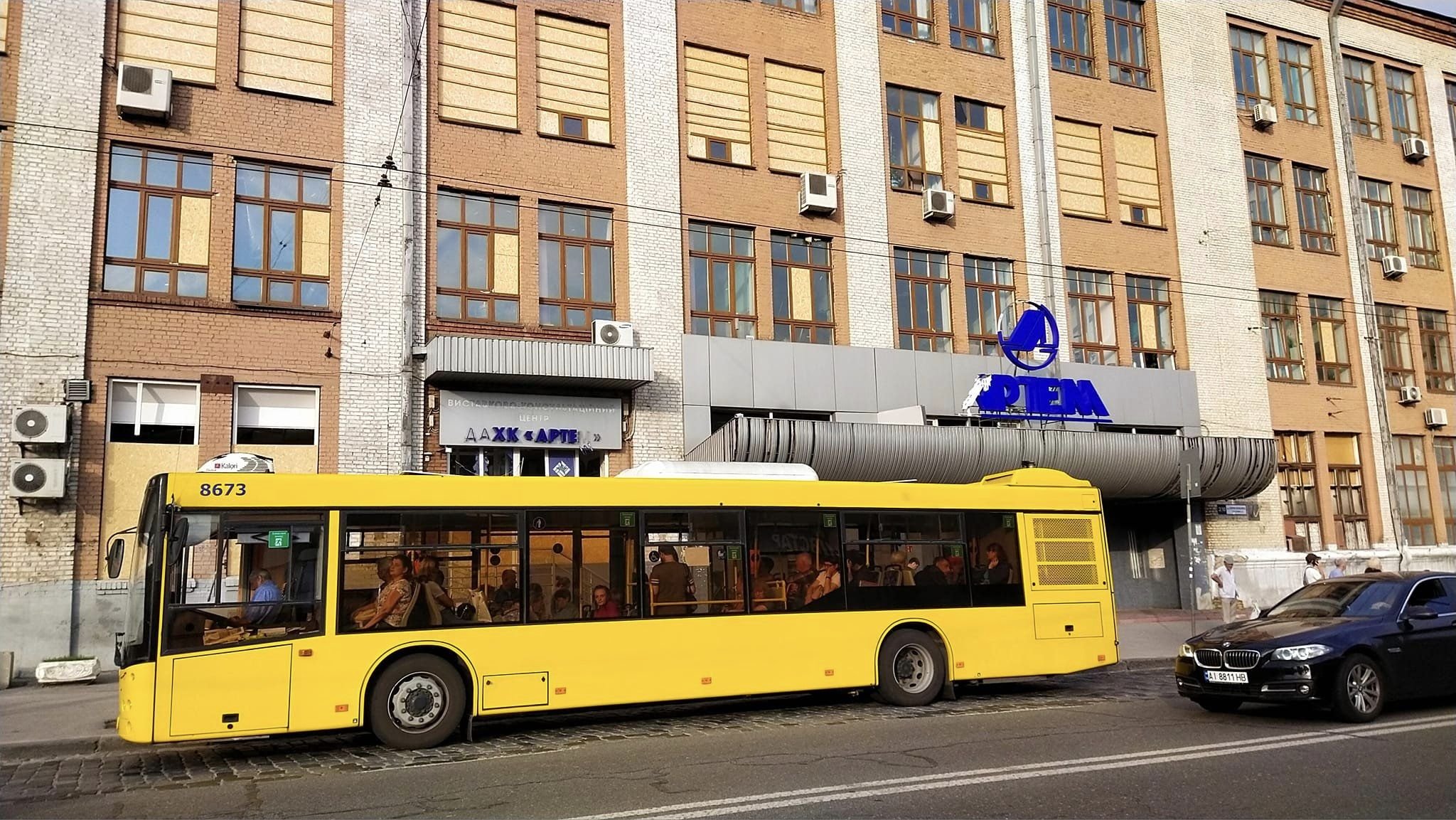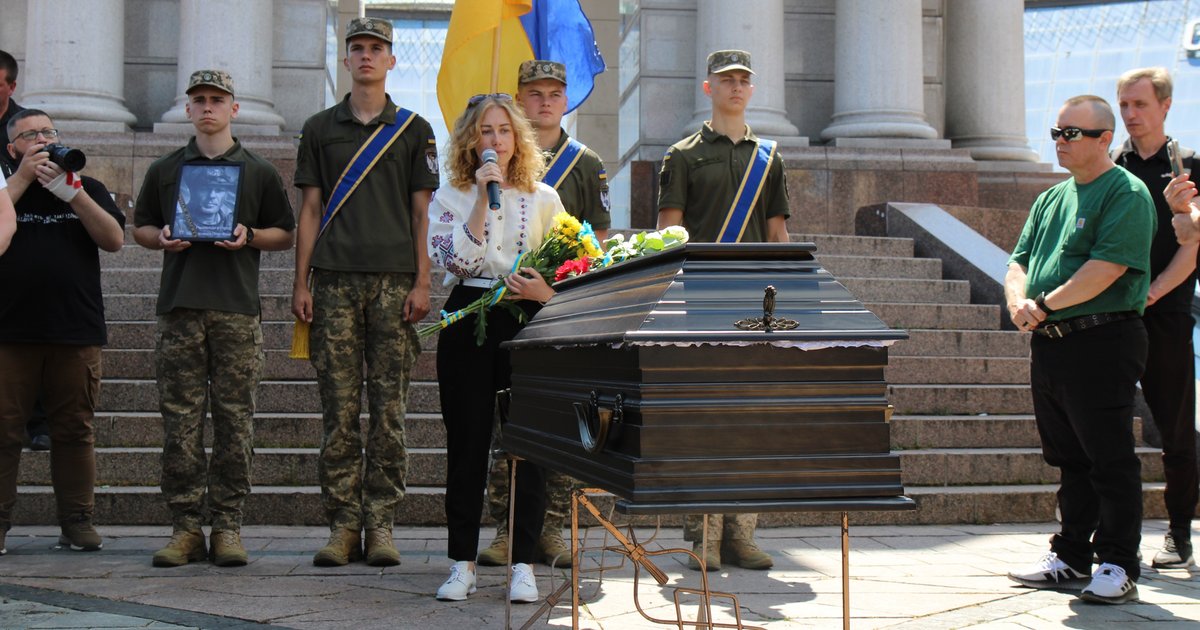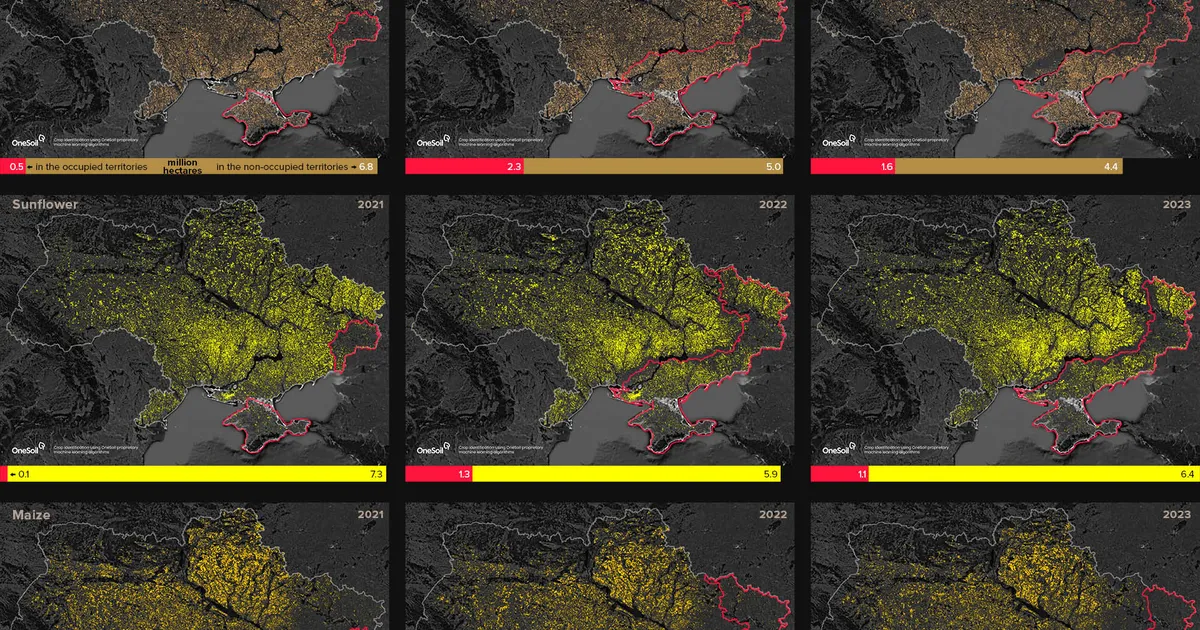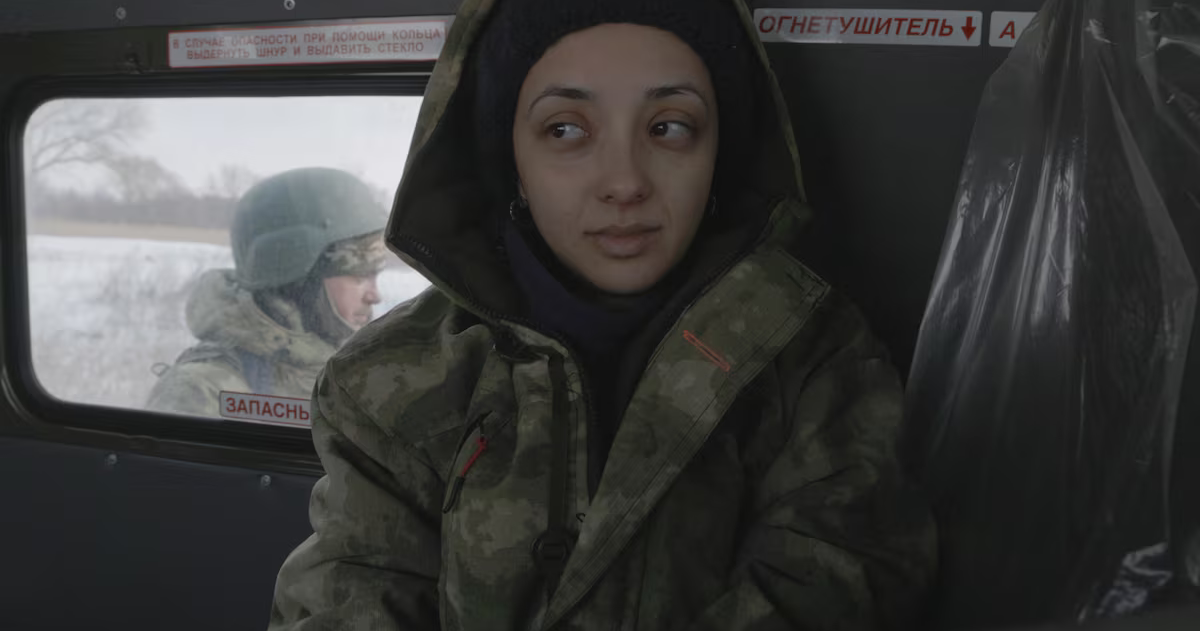Alright, the air raid alert is on, here we are. Time to hop out

The MiG took off, the bus pulled to a stop, and the driver switched off the engine. The people in the cabin were quiet, hoping the driver would ignore it and it would come through. But the driver came out of his cab and said in irritation, “Alright, looks like the air raid alert is on, here we are. Time to hop out.” Kyiv remains one of only three Ukrainian regional centers where public transport stops during air raids. No such ban exists even in Kharkiv, Odesa, Dnipro, and Zaporizhzhia, where shelling occurs more frequently than in the capital.
Читати українською
Text by Valeriia Pavlenko. Data Analysis by Vlad Herasymenko. Design by Nadia Kelm.
Though the city authorities explain the ban to the safety of Kyiv residents, the reality is drastically different. The ban only makes life more difficult and forces public transport passengers to pay money for taxis during the alert.
We have analyzed traffic during and after the air raid and have proved what all Kyiv residents feel, but the city council does not want to see the problem. This ban affects transport services long after the white alert.
Picture this: after a long day of hard work, you leave the office feeling accomplished and make your way home. You rush into the subway, squeeze into a packed car, and just a few stops before your destination, an air raid alarm suddenly pierces the air. However, it annoys you not because you are in danger, but because you are a left bank resident and now you will not get home on time. Because of the city administration ban, Kyiv’s buses, trolleys, trams and overground metro have to stop their work during the air raid sirens.
When I lived on the left bank in Kyiv, my plans were completely ruined every time an air raid alarm went off. Many times I would leave the house, go to the subway, and come back because of the sirens. I often found myself having to reschedule or cancel plans with friends or call a taxi just to make it to a work meeting on time.
I lived in a good neighborhood, but it seemed as if I had drawn the worst lot of all Kyiv residents. To reach the right bank or return to the left one, my sole option was the overground subway. My friend once told me that it was easier for her to get home in Troieshchyna, a more remote district from the center, thanks to minibusses that defied the ban imposed by the Kyiv City State Administration.
Once, I was lucky when the alarm broke out not before the Arsenalna metro station (the last underground station on my route to the left bank), but after the train had passed it. The whole car became quiet, and then I caught the frightened looks of other passengers asking if the train would stop at the Dnipro station, where there was nothing but a closed nightclub and a highway. Fortunately, the train moved on, and a sigh of approval went through the car, and the passengers began to smile. I felt like I was doing something illegal. As I finally stepped off the train at Livoberezhna station, I could not help but think, “Why can't it always be like that?”
At least the subway resumes service almost immediately after a white alert. The situation with other surface transport is much worse.
Surface transport
Once, near the Livoberezhna station, I noticed a bus parked at a nearby stop. When the alarm was over, it did not move, and the bus stayed there for forty more minutes afterward. I wondered if this was an isolated incident or a widespread problem.
To investigate, Texty.org.ua developed a specialized tool (available for analyzing traffic on various routes; it is at the end of the article) that reveals how air raid alarms affect surface traffic.
The data confirms that it takes a long time for surface transport to resume traffic after an air raid is over. Sometimes, passengers cannot use it for two hours after the white alert.
Let’s analyze some vivid examples
Tram 14
This is not an isolated case. Here is a visualization of tram No. 14’s route on January 23, 2023.
The graph is interactive. Hover over it to analyze how the air raid affects transport operations. Read our conclusions below the graph.
After the morning shelling, trams did not run from the Vidradnyi residential area toward Kontraktova Square until 09:42, when the air raid was canceled at 08:14.
This can be justified by saying that the destruction caused by the shelling in the Solomianskyi district that day affected the transport service. However, several trams from the other direction traveled the entire route without any problems. Either the vehicles did not really go on the route, or all the drivers decided to turn off the trackers for some reason.
There were also problems in the direction of Kontraktova Square-Vidradnyi. Immediately after the white alarm, one tram left the terminal stop, and then four more (one after another) appeared at the Sichovykh Striltsiv St. stop. Then a two-hour pause appeared on the route without any vehicles followed.
A few trams ran almost on schedule. However, another hour-long delay appeared on the route. At 13:22, another alarm went off, causing further disruptions.
After the alarm was canceled, huge gaps formed on the route with no vehicles at all
In the afternoon, the alarm started again, ending at 17:41. Afterward, the route became a mess: trams chaotically followed one another, and then there were huge pauses on the route without a single car. All this happened during rush hour until nightfall on a fairly popular route (the tram connects the residential district of Vidradnyi with Podil and Dehtyarivska Street, home to many office and administrative buildings).
Trolleybus 47
Here is an example of another mode of transport on another day. You can see a movement visualization of trolleybus No. 47 (connecting Myloslavska Street in the Troieshchyna residential area and the Minska metro station) on August 9, 2023. The air alert began in the evening and ended at 18:08, right at the start of rush hour. After that, the schedule became irregular, and at some stops, the trolleybus did not appear for more than an hour.
The visualizations here and below are interactive. Hover over the graph to see the exact time and name of the stop.
We requested the Kyiv City State Administration to clarify the reason for such serious disruptions in schedule and received a response in classic bureaucratic slang devoid of any meaning.
“In order to restore the interval and the established schedule on the routes, if there are several units of rolling stock at a stop, departure from the stop can be carried out both immediately after the end of the air raid and after some time. In addition, to ensure mass passenger transportation during rush hours after the end of the air raid, part of the rolling stock can be promptly sent to the terminal stops where the main passenger flow is formed.
In some cases, when the end of a driver's shift occurs during an air raid alert, it is possible to move individual rolling stock units to change drivers. When traffic resumes after the end of the air alert, passengers are not required to pay for the route again.”
The NGO Kyiv Passengers reached a similar conclusion. The activists believe those delays occur because during the alarm, public transport drivers do not abandon their cars at stops and do not go to bomb shelters; they go to terminal stops or other places of standstill. As a result, after the alarm, the car does not move from the stop where it was parked during the siren, as it was intended, but from another place that may not even be part of the route.
This was confirmed by the public transport drivers we interviewed.
“The dispatcher turns us around, sends us to different points, and we wait for the schedule to be restored. Though, I don't understand why we need to try to catch up with the schedule, because in half an hour the alarm may start again. Let us just keep running as we do, and then the schedule will be restored by the evening,” says trolleybus driver Vadym.
Evening alarm
Sometimes, passengers find themselves in almost hopeless situations because of the Kyiv City State Administration ban. I once stepped onto the subway at 10:20 pm and went home. However, an air raid alert had started before we approached the Arsenalna metro station. The station was supposed to close in 10 minutes, so there was no point in waiting for the alarm to go off. I did not want to sleep in the subway.
Hundreds of people left the station and started calling taxis. Uklon, the only app that was working then, kept freezing. After 10 minutes, all the people (friends and strangers) split into groups (who had to go to the same place). The one who was the first to have the app work, immediately took the car, regardless of the cost of the trip, and then divided the amount among everyone.
My group waited nearly 20 minutes for the app to start working and for our order to be accepted. I got home only after an hour and paid 200 UAH (fortunately, the cost of the trip of 800 UAH was divided among the four of us).
I was lucky enough. Volodymyr Nadopta, who also lives on the left bank of Kyiv, once spent the night in the subway. As a result of this incident, he is picketing the Kyiv City State Administration, demanding the cancellation of the requirement to stop the subway during an alarm.
Either spend the whole night in a shelter or go home on foot during the curfew
The situation with other surface transport is worse: on some days, even after the alarm has ended, you may not be able to get home in the evening (or you may have to wait a very long time at the bus stop). Let's look at a few examples.
Evening alarms that go off after the end of public transport put people in a position to either spend the whole night in a shelter or walk during the curfew.
Bus 114
Here is the schedule for February 23 of this year for the popular bus №114 (which runs until 11:30 pm on weekdays).
That day, the alert ended at 23:30. According to Kyiv City State Administration’s logic, passengers should remain in the shelter during the alert and, once it ends, board their transport to head home. But at 11:30 p.m., bus 114 finishes its work, minibusses are also no longer running, and taxis are reluctant to take orders at such a late hour (there are very few cars and high demand, so prices are high).
We asked the Kyiv City State Administration to clarify how passengers are expected to get home when an air alert ends late and regular transport is no longer operating, and whether they plan to organize transportation for such situations. We received answers to all of our requests (part of the response is posted above), but this particular question was ignored.
Bus 22
Let's see how things are on this route during the evening alarms.
On November 28, 2023, the alert ended at 10:01 pm; the buses were supposed to run until 11 p.m., but all of them almost completely stopped moving after the white alert. Several vehicles resumed running around 11:00 pm from several points, but they did not go through the entire route. So even after the white alert, passengers at some stops had to say goodbye to the possibility of getting home by this transport.
What to do?
The rule to stop traffic during an air raid was quite common in Ukrainian cities in 2022. However, this ban is currently in effect only in three regional centers: Khmelnytskyi, Ivano-Frankivsk, and Kyiv.
Even in the cities that are shelled by Russians on a daily basis - Kharkiv, Odesa, Dnipro, and Zaporizhzhia - there is no such ban. In Zaporizhzhia, since the beginning of the war, trams and trolleybuses have been running free of charge for a long time (only recently did the city reintroduce paid fares for electric transport). In Odesa, some electric transport routes run even during curfews. And in Kyiv, the city's electric train runs without any problems during air raid alerts.
Public transport does not stop during the alerts in the cities that are shelled daily — Kharkiv, Odesa, Dnipro, and Zaporizhzhia.
Kyiv residents have already created seven petitions demanding that the ban be lifted. Each petition garners enough votes to be considered by the local council, but the Kyiv City State Administration rejects it.
Stopping transport during an air raid discriminates against less affluent Kyiv residents. After all, car owners and taxi passengers can move around the city without any problems, and the same goes for minibus passengers (minibusses were stopped during the alert only once, in January 2024, and then taxi prices in the city soared to UAH 1,000).
This pushes an increasing number of citizens to buy and use their own cars, ultimately worsening the traffic and life in the city (read more about this here).
Fear of responsibility
When Klitschko's deputy, Mykola Povoroznyk, was asked in an interview with Ekonomichna Pravda why the ban was still in effect, he gave two examples: how a piece of a downed missile fell near a minibus and how, in March 2022, missile fragments cut a trolleybus that was being used as a battlefield fence (which was normal practice at the beginning of the full-scale invasion when Kyiv was under a risk of occupation). Povoroznyk said he did not want this to happen again to passengers in public transportation.
"If God forbid, something hits a bus, trolley, or subway during an air raid, no one will say that Sasha (name of the journalist who interviewed him - Ed.) and Kolya (short form of Mykola ‒ Ed.) decided not to go to the shelter but to keep going. No one will say for sure. They will say that the one who gave permission to travel by transport is to blame," Povoroznyk said.
If God forbid, something hits a bus, they will say that the one who gave permission to travel by transport is to blame
The bus drivers keep telling the same story and express their fear of being blamed for passengers' deaths.
"Did you see how the glass in the trolleybus near Ohmatdyt was broken? What if there were passengers in it?" says trolleybus driver Rostyslav. "Will I be responsible for that? I'd be the one who would be taken to court, so they (the KCSA, - Ed.) did the right thing."
"It's the way things are now, and we have to take care of passengers," comments trolleybus driver Oleh. "And if something happens, who will be responsible?"
In a recent interview, Ruslan Kandybor, director of the Kyiv City State Administration's Department of Transport Infrastructure, said that traffic could be restored, but only if drivers take responsibility for the lives and health of passengers.
"If today someone wants to take responsibility and says that they are ready to drive during the air alert and transport people, and people (passengers - Ed.) say they have no complaints, this is a completely different view," Kandybor said. "If drivers come out today and say they are ready to drive and control this process, we could probably consider this option.”
However, as the department head himself rightly noted, "none of the drivers will take on such responsibility."
We consider the above quotes to be a classic example of avoiding responsibility and covering one's backside in today's realities. Although the KCSA officials can be understood, the President's office's constant desire to remove the current mayor from the city's leadership results in frequent criminal cases against city officials. Therefore, they reasonably believe that the President's Office will use the possible tragedy of a missile or drone fragment hitting public transportation to discredit the capital's authorities.
And no one wants to talk to investigators. And the situation when law enforcement officers from various agencies come to officials because of any emergency does not help anyone to take responsibility (read more about this in our article here).
Kyiv residents are hostage to this strange political configuration and officials’ fear
But this does not mean that Kyiv residents should be held hostage to such a strange political configuration or officials’ fear.
Luckily, most alarms pass without shelling. Therefore, people do not go to the shelters and remain in the transport (if it doesn't leave the stop) or stand at the bus stops.

Sometimes, the situation reaches the point of absurdity: in this photo, during the alert, the bus is standing at the main entrance to the Artem defense plant, which was repeatedly attacked by Russians with missiles. Passengers and the driver are sitting inside. Is this a safety concern?
Explore other routes
Texty.org.ua has created a tool that shows how the decision to stop public transport during an air raid alert affects its operation. Select the day you are interested in and one of the available routes on the calendar. The color on the calendar indicates the days when there was an air alert. The more intense the color, the longer the alert lasted.
If you are interested in how the alarms affect transport operations in the evening, switch the button next to the inscription “Evening alarms only.” The calendar will indicate the days when the alarm went off after 20:00.




